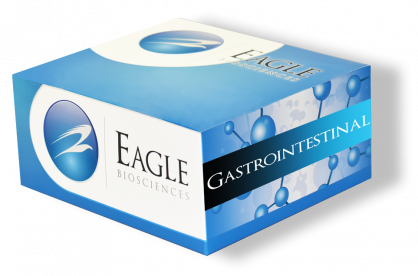Anti-tTG IgG ELISA Kit
Anti-tTG IgG ELISA Kit is for research use only
Size: 1× 96 wells
Sensitivity: 0.12 AU/ml
Dynamic Range: 5 – 320 AU/ml
Incubation Time: 1 hour 15 minutes
Sample Type: Serum, Plasma
Sample Size: 10 µL
Alternative Names: Anti-Human tTG IgG ELISA, Human Anti-Tissue Transglutaminase IgG ELISA
Controls Included
Assay Background
Celiac disease is characterized by chronic inflammation of the intestinal mucosa and flattening of the epithelium or positive (villous atrophy). The cause of celiac disease is an intolerance to gluten, the protein of wheat, rye and barley. The main symptoms are diarrhea, gastrointestinal problems, anemia, fatigue, psychiatric problems and other diverse side effects. In some cases patients may be asymptomatic.
Clinical and mucosal recovery after institution of a gluten free diet is objective evidence that the enteropathy is gluten induced. Diagnosis of celiac disease is confirmed by abnormal findings on the small bowel biopsy and later verified by the clinical response to a gluten-free diet, i.e. the avoidance of wheat, barley, rye, oats and triticale. Left untreated patients suffering from celiac disease have an increased risk of lymphoma or gastrointestinal neoplasm. Furthermore, even if clinically silent, longstanding untreated celiac disease predisposes for other autoimmune diseases, like diabetes mellitus, rheumatoid diseases, autoimmune hepatitis or thyroiditis.
The enzyme tissue Transglutaminase (tTG) has been reported to be the main, if not sole, target for endomysial antibodies. These antibodies fall once a gluten-free diet has begun, thus facilitating monitoring of dietary compliance. Presence of IgG antibodies against tTG are a highly sensitive marker for celiac diesease with 95-100 % and has a specificity of 90 to 97%
Assay Principle
Anti Tissue Transglutaminase IgG test is based on the binding of serum or plasma antibodies on the human recombinant tissue transglutaminase coated into the microplates. The antibodies in calibrators, controls or prediluted patient samples bind into the inner surface of the wells. After a 30 minutes incubation the microplate is washed with wash buffer for removing non-reactive serum components. An anti-human-IgG horseradish peroxidase conjugate solution recognize IgG class antibodies bound to the immobilized antigens. After a 30 minutes incubation any excess enzyme conjugate, which is not specifically bound is washed away with wash buffer.
A chromogenic substrate solution containing TMB is dispensed into the wells. After 15 minutes of incubation the color development is stopped by adding the stop solution. The solutions color change into yellow. The amount of color is directly proportional to the concentration of IgG antibodies present in the original sample.
Related Products
Anti-tTG IgA ELISA Kit
Celiac EmA IgA ELISA
Celiac EmA (Anti-Endomysium Antibody) IgG ELISA Assay Kit


